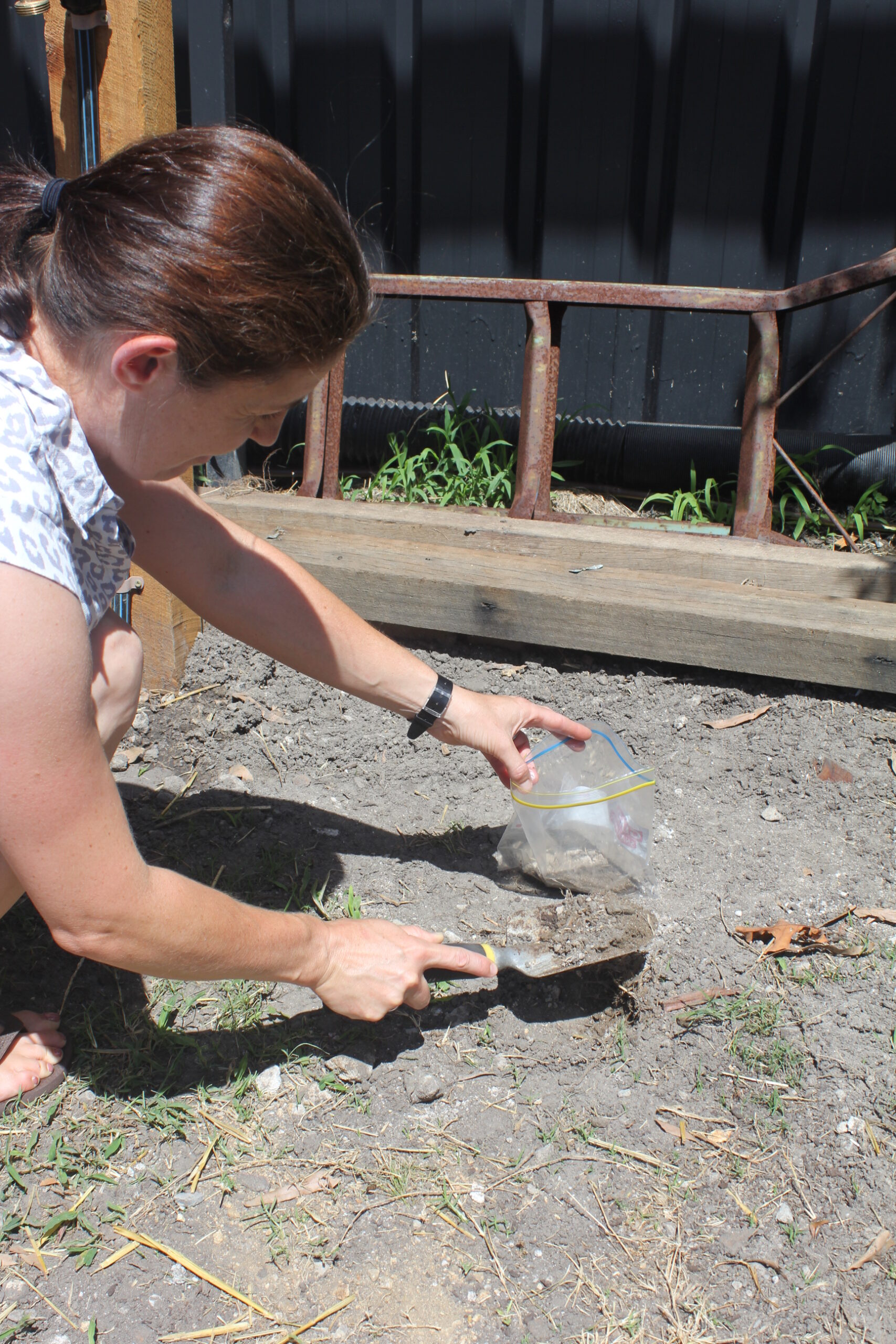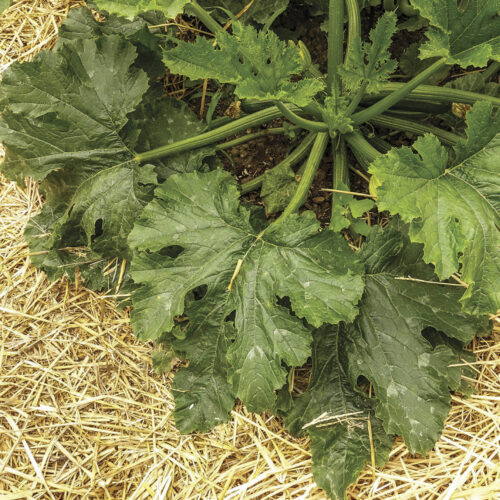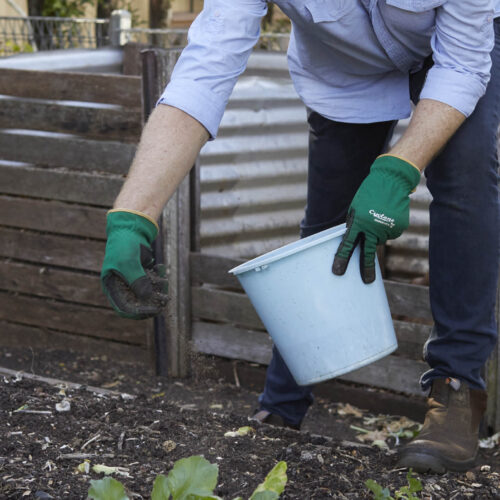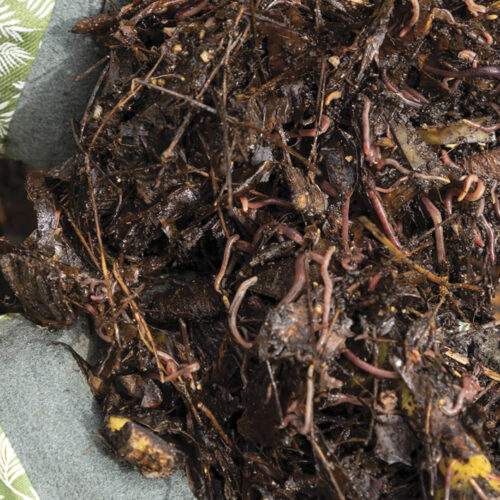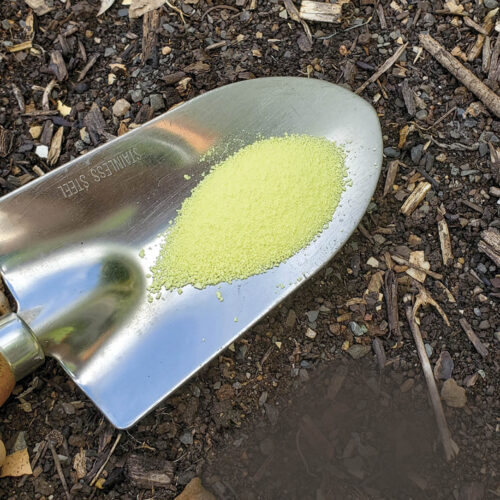Testing times
2015-02-13T04:15:49+11:00
Soil testing in the Patch from Scratch backyard revealed the extent of environmental contamination in our cities, writes JACQUELINE FORSTER.
Case Study
The Gordon family of Dulwich Hill
Our Patch from Scratch garden is situated in a highly contaminated area of Sydney’s inner south-west, meaning soil testing was imperative. Owners, Alex and Stuart Gordon, were aware of the dangers of soil contamination when planning their garden but weren’t put off by the challenges to remediate affected areas in order to grow produce and keep chooks.
“We knew of the likelihood of lead contamination in our soil and the health risks associated with the presence of lead in older inner-city suburbs like Dulwich Hill. A friend who set up a community garden a few years ago had to manage heavy lead contamination on that site, so we were not surprised that the samples taken from our yard came back with elevated levels of lead,” says Alex Gordon.
The Gordons took advantage of the free service offered by VegeSafe to test soil samples collected from various areas around their garden including the vegie beds, proposed chook run and lawn area. Results showed levels of lead contamination above the recommended acceptable level, in some areas they were three times over the national benchmark.
“It was interesting to see how high the levels were in some parts of the garden, the variation in levels across different areas, and most importantly to learn what we could do about it,” says Alex.
VegeSafe promote the use of raised garden beds and clean soil to grow vegetables in urban areas. “Through the process we learnt how to deal with contaminated soil by building raised beds and filling them with new soil, something we had planned to do anyway,” says Alex. “We also learnt that grass and/or mulch covering soil would prevent contaminated dust from blowing around the backyard minimizing our children’s exposure, and to thoroughly wash home-grown vegetables which may also have lead dust on them.” Knowing that your garden is organic and there is no pesticide residue on your food could make you a bit complacent about washing home-grown produce but in urban environments you still need to.
In the chook run, advice consistent with local council regulation, VegeSafe and poultry experts, included removing the topsoil or capping exposed soil with a solid base of pavers, a concrete slab, or compacted road base. The Gordons chose to use a 100mm thick layer of road base stabilised with concrete as it is economical and easy to install. A deep litter of mulch, clean soil, wood shavings or straw should be laid over the base. Avoid free-ranging poultry in urban environments where known contamination exists and remember to wash home-grown food for chooks as you would for yourself.
Organic Gardener conducted further soil tests at the Gordon’s property for evidence of polycyclic aromatic hydrocarbons (PAHs), organochlorine and organophosphate pesticides, herbicides and fungicides. The National Measurement Institute laboratory tests* revealed low levels of PAHs, possibly remaining from an old incinerator that was removed from the property. There was no reportable level of contamination from pesticides, herbicides or fungicides.
“Although we were aware of the potential hazards of urban gardening, soil testing allowed us to get more information about how to handle the problem, as well as reassurance that you can keep on gardening so long as you are aware of it and take steps to manage it,” says Alex.
“VegeSafe provide a great free service with very clear instructions on how to take samples and send them in. I have already recommended it to friends in our area.”
*Laboratory testing is not cheap but should be considered if you are aware of contaminated land in your area. For a list of accredited labs go to The National Association of Testing Authorities.
Below are the actual results from VegeSafe testing at the Patch from Scratch garden.
Dear VegeSafe participant:
Below are the total metal concentrations results from the X-ray fluorescence analysis of your soils. The analysis of your soil is subject to various limitations including moisture content of the soil, its grain size and organic content. In a standard laboratory test additional and more intensive preparation of your soil samples would occur allowing greater reliability of the results. Therefore, we advise you that the analyses provided below are subject to these technical limitations and should be taken as a guide to the metal content of your soil. If you require more detailed analyses we recommend that you submit your samples to a laboratory accredited by NATA, which is the National Association of Testing Authorities.
|
Sample ID |
Soil Location |
As (mg/kg) |
Cd (mg/kg) |
Cr (mg/kg) |
Cu (mg/kg) |
Mn (mg/kg) |
Pb (mg/kg) |
Ni (mg/kg) |
Zn (mg/kg) |
|
A |
Back house near drain pipe |
0 |
0 |
24 |
21.7 |
21 |
449 |
0 |
192 |
|
B |
Front lawn |
0 |
0 |
0 |
22.5 |
70 |
488 |
10 |
200 |
|
C |
Veggie 1 beds |
24 |
0 |
76 |
100 |
155 |
1191 |
33 |
1195 |
|
D |
Veggie along back fence |
27 |
0 |
0 |
64 |
201 |
644 |
0 |
532 |
|
E |
Veggie 2 near #18 fence |
0 |
0 |
56 |
69 |
109 |
1485 |
21 |
871 |
|
F |
Native and frangipani area |
0 |
0 |
54 |
37 |
89 |
629 |
30 |
651 |
As – arsenic; Cd – cadmium; Cr – chromium; Cu – copper; Mn – manganese; Pb – lead; Ni – nickel; Zn – zinc
Testing for Pesticides*
by Jill Griffiths
Growing your own fruit and vegies and having some backyard chooks is a dream for many, but chemicals lurking in the soil can be an unseen danger.
Organochlorine compounds, which were widely used in the horticulture and agriculture industries as herbicides, insecticides and fungicides in Australia from the 1950s, can still be detected today.
Given that much farming and horticultural land has been swamped by suburbs, many backyards may be contaminated with organochlorine residues.
Organochlorines were also used to control termites in fences and houses. Among the most widely used were dieldrin, DDT, heptachlor and chlordane. By 1987, all of these were deregistered for use due to their toxicity and extreme persistence in the environment – remaining in the soil long after they were originally used. Research has also shown that they remain in the bloodstream of humans.
Organochlorines are stable compounds. They are not water soluble, so they are not washed through the soil profile; they remain where they are sprayed, stuck to soil particles. Anything that eats those soil particles will eat the organochlorins as well. Poultry – especially chooks – ingest a lot of soil as they peck and scratch around. Organochlorines are also fat soluble,which means they lodge in the fatty deposits of animals. In sheep and cattle, this is the milk and fat. In poultry, it is the fat and the eggs.
These chemicals are persistent, so if you eat the milk, meat or eggs from contaminated animals you will also be ingesting the organochlorines.
For some landholders it may not matter if residues are present; it depends on what you want to do with your land. If you want to revegetate, grow fruit trees or run horses, contamination may not be a major issue. But if you want to grow root crop vegetables (where the edible portion is immersed in the soil), raise poultry or run animals for meat or milk production, it matters a lot. Commercial growers cannot get organic certification if the soil has chemical residues.
* Extracted from Organic Gardener Essential Guide Backyard Chickens

